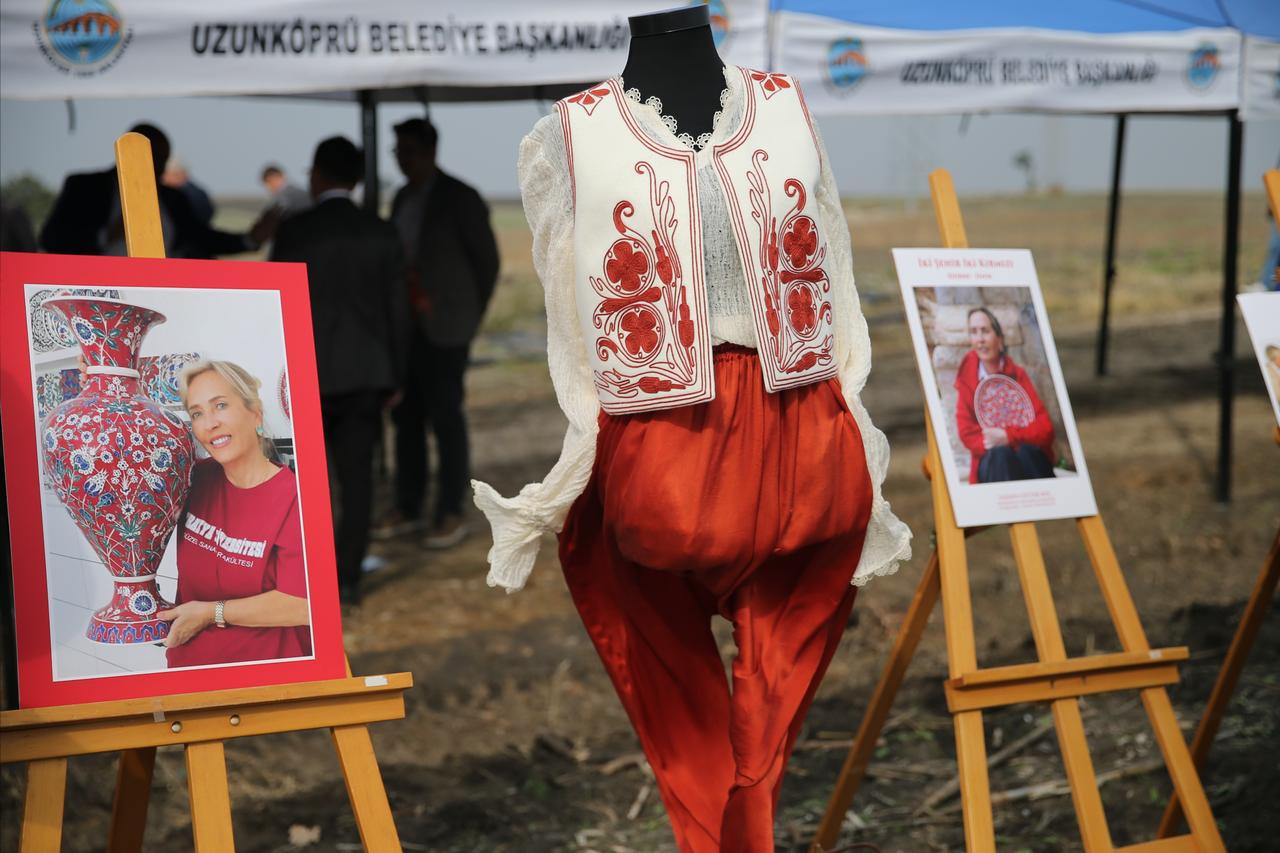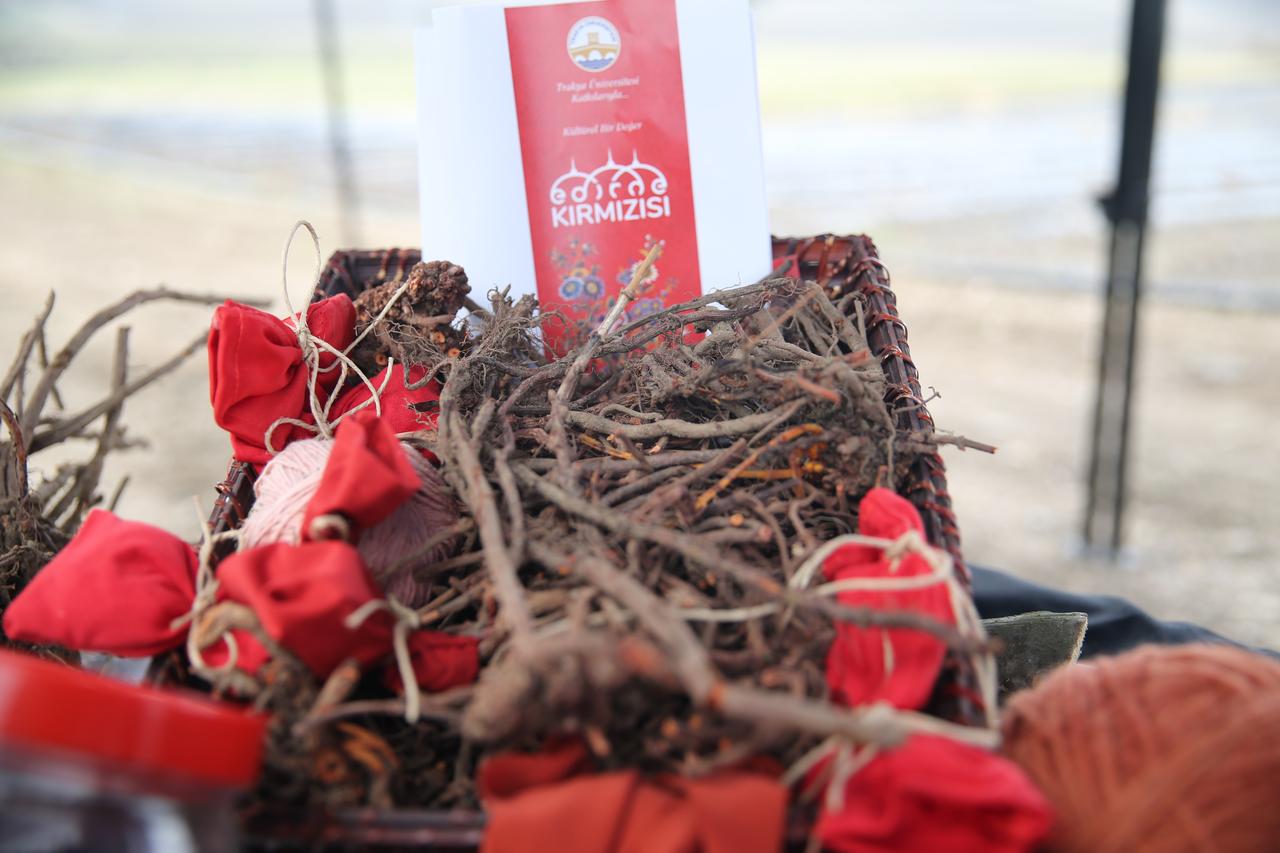
The iconic “Edirne Red” (Rouge d’Adrinople), once famed across Europe and even the subject of espionage in the Ottoman period, is reclaiming its place in both culture and industry through the dedicated efforts of Trakya University (TU).
Trakya University Edirne Rose and Red Application and Research Center Director, Associate Professor Dr. Nilgun Becenen stated that the university has undertaken comprehensive studies to reintroduce the historical color into Edirne’s cultural identity and local economy.
Dr. Becenen emphasized that the initiative began with awareness and promotional activities, followed by pilot cultivation of the rubia tinctorum plant—the natural source of the dye used to produce Edirne Red.

“Through our research projects, we identified the cultivation conditions and harvesting process of the dye plant,” she said. “We later developed dyeing formulas and, after more than 500 trials, successfully reproduced the authentic shade. The final color was confirmed in a joint meeting with the Edirne Governorship, Edirne Municipality, and our university officials.”
Assoc. Prof. Dr. Becenen noted that the development of Edirne Red is being carried out collaboratively with local institutions. The rubia tinctorum plant, whose trial cultivations were completed successfully, is now being produced by local farmers.
“Our work is progressing positively,” she said. “The production of the dye plant has begun. This is a valuable asset for Edirne. While it is not meant to replace major crops such as sunflower or wheat, it can provide farmers with an additional source of income by being cultivated in areas unsuitable for these crops. This will enhance agricultural diversity and increase rural earnings.”
According to Becenen, the plant, which can be harvested for three consecutive years, contains up to 30 natural pigments in its roots and serves as a non-allergenic, non-carcinogenic, and environmentally friendly dye source that produces a vibrant and lasting red tone.

Highlighting the growing range of applications for Edirne Red, Becenen stated that the color adds cultural and aesthetic value to every object it is applied to.
“Edirne Red can be used as a solid dye or in printing processes,” she explained. “It is already utilized in textiles and will soon be applied in home decor, clothing, ceramic arts, and woodcraft. It is a natural dye that harmonizes with every field of use.”
Renowned as a prominent color in the global textile industry, Edirne Red was first developed in the 15th century in Edirne using natural root dyes. The bright, luminous hue, described as a more vivid version of brick red, was formulated by two local dyers whose secret recipe was eventually smuggled to Europe through espionage.
By the 1740s, production began in France under the name Rouge d’Adrinople, and the color became highly sought-after in European textile manufacturing. In Edirne, it was historically used in architectural decorations and traditional crafts, but gradually fell into obscurity over time.